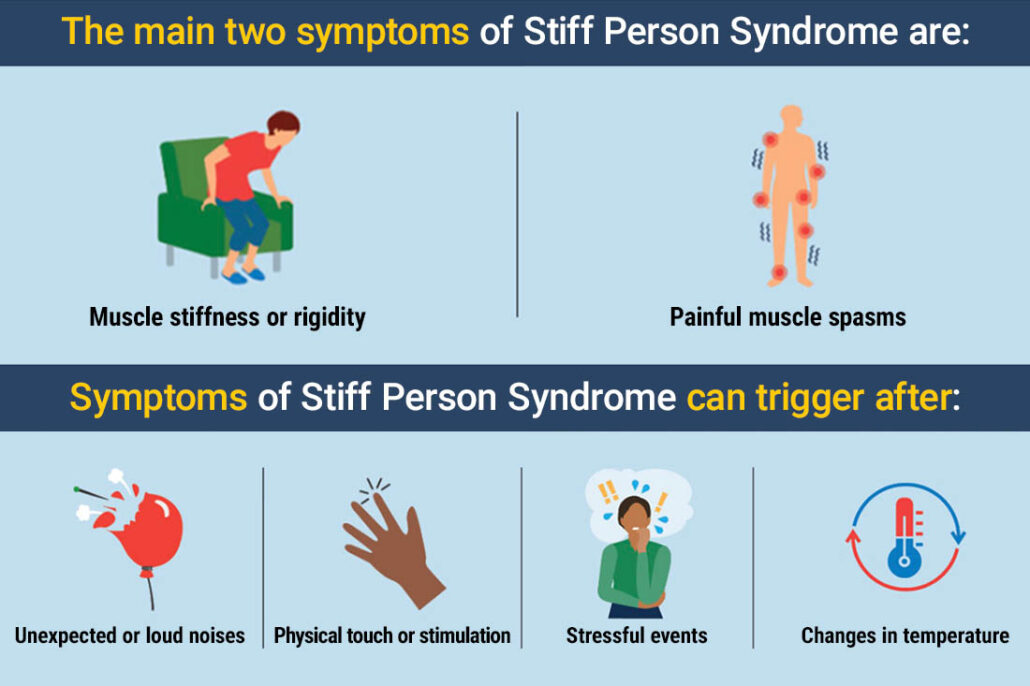
Reading Time: 4 minutes
Well, add another one to the list of things people with type 1 can get!
If you’d never heard of stiff person syndrome (SPS) before Celine Dion announced her diagnosis in 2022, you’re not alone — most people hadn’t heard of it either until she dropped the news. It was one of those, “Wait, that’s a real thing? What is stiff person syndrome?” situations.
Yes, it’s real. And no, it has nothing to do with the little blue pill. SPS is actually a rare autoimmune disorder that affects fewer than 5,000 people in the U.S., and it sometimes shows up in the same company as type 1 diabetes.
I wanted to highlight this case because not many people know that one of the first uses of the GAD autoantibody test was to help diagnose stiff person syndrome. We’ve been using GAD forever to determine if someone has type 1 or type 2 diabetes, but years ago, it was also an important indicator of SPS.
GAD remains part of the diagnostic workup to determine SPS even to this day, and super high GAD levels can be a strong indicator of the condition.
Meet the Patient: Andre
Andre is a 55-year-old Black male originally from the Congo. He was raised in the United States and joined the Marine Corps when he was 18. About ten years into his military career, he was diagnosed with type 1 diabetes and was medically discharged. He became a patient at the VA in San Diego, where I saw him regularly in the diabetes clinic (and still do).
When he was first diagnosed with type 1 diabetes, we started him on multiple daily injections. Later we switched him to a “dumb pump” – which is what we call a pump that doesn’t communicate with CGMs. There were no CGMs way back then, so every pump was a dumb pump!
The Problem: Severe Back Stiffness and Muscle Spasms

A few years into Andre’s type 1 diabetes diagnosis, he started experiencing unusual symptoms. His back felt really tight, almost like it was locking up, and his legs would cramp, making it hard for him to walk. He often had painful muscle spasms, and as a result, he felt unsteady on his feet.
Things got so bad, he scheduled an evaluation with an orthopedic surgeon to see if surgery could restore some movement.
During a routine diabetes clinic visit, we noticed something odd — he couldn’t even tilt his head down to see his own abdomen when changing his pump site. That’s when we suspected he had stiff person syndrome.
What Is Stiff Person Syndrome?
Stiff person syndrome is an autoimmune neurological condition that can cause intense muscle stiffness and spasms. Depending on the type of SPS, it may also cause trouble with balance, double vision, or slurred speech. Symptoms can often come and go, but they tend to worsen over time.
What Are Common Symptoms of Stiff Person Syndrome?

Classic SPS causes muscle stiffness, rigidity, and painful spasms in the trunk muscles (like the back) as well as in the limbs. The intensity and progression of these spasms and stiffness can vary a lot from person to person.
Common stiff person syndrome symptoms include:
- Frequent painful muscle spasms in the legs
- An exaggerated startle response (being startled easily by unexpected sounds)
- Difficulty walking during episodes of stiffness, sometimes feeling as if your muscles are “locked”
- Shortness of breath if SPS affects muscles in the chest
- Chronic pain
- Increased stress and anxiety, often due to fear of falling
We asked Andre some pertinent questions about his symptoms that related to stiff person syndrome. Our questions included:
- Do your symptoms affect walking or performing daily tasks?
- Do you have pain from the stiffness or spasms?
- Are you experiencing difficulty with balance?
- Are you more sensitive to loud noises, touch, or stress?
Andre answered yes to every one.
How is Stiff Person Syndrome Diagnosed?
Stiff person syndrome is complex, and many symptoms can be caused by other, more common conditions. The hard part is having an index of suspicion.
The following tests can help confirm SPS:
- Blood tests including GAD
- Electromyography (EMG)
- A lumbar puncture can help the doctor rule out other causes of your symptoms
- Imaging studies to help rule out other conditions that can seem like SPS
In the early 2000s, GAD autoantibody tests were one of the main indicators of stiff person syndrome. GAD is still used today, along with additional tests like EMG. We tested Andre’s GAD and his levels were off the charts high – well over 400 nmol/l, when normal is less than 20 nmol/L.
After additional tests, Andre was officially diagnosed with stiff person syndrome.
What’s the Connection Between Stiff Person Syndrome and Diabetes?
SPS is often linked with other autoimmune diseases. In fact, up to 80% of people with SPS have at least one other endocrine condition. Some of the more common ones include pernicious anemia (a blood disorder), autoimmune thyroid disease, and type 1 diabetes, which occur in about 5%, 10%, and 35–60% of SPS patients, respectively.
Doctors providing stiff person syndrome treatment should be aware of the possibility that a patient might also have other autoimmune health issues that haven’t yet been diagnosed.
Type 1 Diabetes and Stiff Person Syndrome Treatment Strategy
Unfortunately there’s no cure for stiff person syndrome, so treatment is all about managing symptoms and trying to improve quality of life.
For Andre, we took a multidisciplinary approach:
- Medication: We put Andre on a low-dose muscle relaxant – not enough to make him drowsy, but enough to improve his symptoms.
- Physical Therapy: We got Andre started on physical therapy to help preserve his mobility.
- Stress Reduction: We introduced Andre to stress-reduction techniques like mindfulness and meditation to try to help minimize spasm triggers.
- Mental Health: We referred Andre to a mental health professional with expertise in those living with chronic conditions like diabetes and stiff person syndrome.
- Diabetes Technology: We transitioned Andre to an automated insulin delivery system as soon as they became available to help ease the burden of diabetes management.
How He’s Doing Now
I just saw Andre in clinic this summer, which is what prompted me to share his case. It’s been about two decades since his SPS diagnosis. Although he still has challenges with both SPS and type 1 diabetes, he can walk comfortably, and his spasms are less intense and less frequent.
Stiff Person Syndrome and Type 1 Diabetes: Key Takeaways
If you have type 1 diabetes and you start experiencing unusual stiffness, cramps, or spasms, don’t shrug it off. Talk to your doctor. Stiff person syndrome is rare, but medications and lifestyle changes can improve quality of life. A strong care team can make all the difference in helping you stay mobile, comfortable, and living life on your terms.
And if you do find that a certain body part “down there” has been stiff for more than four hours, it might be due to the little blue pill after all. In which case…congratulations!


Dear Dr. E,
I can’t thank you enough for writing this article! This FANTASTIC information will help me as deal with my docs at Kaiser.
Thank you again, you are a true mensch!
Warm regards,
Riva
Hi Riva,
I thought you might like to know that there is a group over on Facebook : Stiff Person Syndrome-SPS, with 4.7K members that I have found to be so very helpful in my own research of SPS.
I hope this might be helpful to you!!
Warm regards,
Shawna
Thank you so much for that kind message. Comments like that really make my day! There are many good things about Kaiser, but you certainly have to be your own advocate. I wish you the best.
Thank you for shedding light on this!! I’m a type 1 and was just recently diagnosed with SPS, by way of a high GAD result. I’ve had the most terrible back spasms, over the past 30’ish years, and finally a diagnosis that matches the rest of my symptoms, confirmed by my Neurologist, here in Bend, Oregon. There’s so little talk of this connection between Type 1, GAD+ and SPS; I suspect the more that others become aware of it, the more light bulbs will click, and more diagnosis will come to light, showing that SPS in this population is not as rare as was previously thought. Thanks again for being such a bright light, and sharing your knowledge. I Love you TCOYD Edutainers!!
* A Special Thank you to Andre, for sharing his story with us!! 🙂
Hi Shawna,
Your comment made my day. You are so right that it is probably more common than we think. Sharing stories like this really is beneficial for everybody. All of us at TCOYD love you as well!
My son was diagnosed with type 1 diabetes over 40 years ago. About 5 years ago, his brother started having very prolonged and intense muscle spasms. It took a long time for him to be diagnosed with SPS. So just wanted people to know if you (with type 1) have a relative with these symptoms, have them checked out for SPS, too.
Hi Susan,
Comments like yours really help others, so we appreciate it!